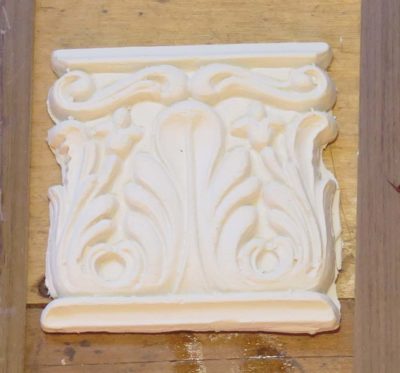Gelatin Molds For Plaster Casts

A couple months ago I was sent a question about using gelatin molds for casting architectural plaster. I had seen references to the technology in several of my old books but did not possess any that provided a decent description of the material or the process, so I noodled it a bit. I’m not an architectural historian per se, so there might be plenty of old books with the exact information.
For the past almost forty years I have relied on silicone RTV molding rubber and never saw the need to broaden that horizon, but this question prompted me to undertake some exploring. I am awfully glad I did as I now have another potent arrow in the quiver.
Of course at issue were several considerations.
- The gelatin (hide glue) would need to be used in the semi-cured state, in other words after it had gelled and had not yet lost enough water to enter the more solid phase of a dried, cured mass.
- The gelatin mold had to be firm/flexible enough to actually cast plaster into it, then have the casting de-molded ex poste.
- The mold needed to be robust enough for repeated using. The literature references using the molds dozens or even hundreds of times.
- Finally, the mold needed to remain viable while not becoming a giant fur-ball of mold.
Thanks to a timely failure of a tordonshell batch I gleaned the path to success, when combining that experience with some noumena from my wanderings into materials science. The ultimate result was a high performance molding material that was also cheap.
The trek included a number of face palm moments in discovering new ways of working.
Stay tuned.


In “my world” ( pastry and confectionary) we have gelatin molds used for casting chocolate. When you think about it, there’s not much difference between hide glue and food grade gelatin.